The UK soft drinks market is keeping pace with the times and delivering growth. Gaelle Walker updates you
The UK soft drinks industry put in a stirling performance last year, growing 2.4% to £8.5bn and that's against a backdrop of poor weather, reduced consumption, shifting regulatory pressures and evolving consumer demands.
Britvic's latest Soft Drinks Report shows that take-home sales values rose 2.8% to £6.07bn, driven largely by premium and healthier options, as well as drinks which offered functional benefits such as enhanced vitamins, minerals, electrolytes or energy, and which commanded a price premium.
Among them were glucose and stimulant drinks, which were up 25% to £481m, and sports drinks which grew by 16% to £154m, riding on the crest of the health and wellbeing wave, of which exercise is an integral aspect.
Lucozade Energy remains the brand leader within glucose drinks, with sales up 14% to £221m, while Red Bull was the biggest beneficiary of consumers' thirst for drinks with functional benefits. Sales of Red Bull climbed 23% to £170m.
Both brands have launched new products onto the market this year. Lucozade rocked the category in April with Lucozade Alert, designed to provide office workers with mental as opposed to physical stimulation, while Red Bull launched its new Simply Cola variant.
Red Bull plans to grow its share even more this year with a 15% increase in marketing support and high-profile events such as the Red Bull Flugtag flying event, which will take off in London's Hyde Park in June.
New entrant Relentless has also made its mark on the category, notching up sales of £20m and boosted by the launch of Relentless Juiced in March.
With all these innovations, new buyers have been flooding into the glucose and stimulant drinks sub-category, and Britvic figures show that 31% of the British population now buy into the category at least once a year.
Sports drinks continued to perform well in 2007 as health-conscious consumers were inspired to get active. The number one brand remains Lucozade Sport, growing at 15% with sales of £102m. However, Powerade was hot on its heels, growing by 39% and worth £31m.
Smoothies continued to take the soft drinks market by storm in 2007, benefiting from the heath and wellbeing trend, as well as consumer desire for more natural products.
This trend also brought pure juice close in value size to the largest sub-category, cola. It now has a 17% share of take-home sales, against cola's 21%.
Smoothies were again the fastest growing sub-category with a 31% rise in value, however, they failed to duplicate their 2006 success when they more than doubled growth. Smoothie sales for 2007 totalled £214m, of which brand leader Innocent took a majority stake at 66%, growing sales by 47%.
A number of innovations in the smoothies market took place this year, including Tropicana's new range of pure fruit smoothies. The company aims
to introduce loyal Tropicana consumers to smoothies, while also attracting new smoothie drinkers to the sector.
February saw the repositioning of PJ's Smoothies with lower price points, an optimised range and new packaging.
And just last month Nestlé revealed that it was teaming up with Boost Juice Bars to launch a range of fruit smoothies containing 100% natural health-boosting ingredients.
The drinks that lost the most ground in 2007 were the most weather dependent. In the wet summer months, consumers shied away from plain bottled water, resulting in a 3% drop in sales of plain bottled water to £463m. Squash sales were also hit by the poor weather, with sales values down 7% to £435m.
After double-digit growth in 2006, sales of water-plus (water with added flavours
or functional benefits) fell 11%, driven primarily by flavoured water, which accounts for 99% of the sub-category. Private label bore the brunt of this loss, declining 17%.
Functional waters make up the remaining 1% of the water-plus sub-category and offer added benefits such as vitamins. They increased sales by 94% and industry commentators say they are set to become increasingly important in the future.
As for carbonates, they slightly improved their value and volume share against still drinks, boosted by premium-priced glucose and stimulant drinks, as well as new pack formats. Carbonates were also less affected by the terrible weather than still categories such as water and squash, which benefit greatly from higher temperatures.
Another interesting shift which took place in 2007 was between diet and regular drinks. It would seem that consumer demand for more natural products is turning some shoppers away from diet and no added sugar variants and back to natural sugar options.
Testing Times
The soft drinks industry will have to face up to plenty of challenges this year, most of which will be of the legislative kind.
The Food Standards Agency moved to ban a number of artificial colours from food and drink products in April, despite the fact that many manufacturers had been making huge efforts to reformulate of their own volition.
The Agency recommended that ministers call for manufacturers to remove six artificial colours by the end of 2009, and lobby for a European Union-wide ban.
Advertising restrictions will continue to remain front of mind for the industry as pressure groups continue to call for further restrictions on the advertising of high fat, salt and sugar products to children. New restrictions have already been phased in, but there are still calls for a total 9pm watershed ban.
Sustainability issues are also set to make their mark on the industry this year, as shoppers increasingly choose products based on their earth-friendly credentials. Many soft drinks manufacturers have taken drastic steps to reduce carbon footprints, introduce lightweight bottles and up their recycled PET content. Data from the Bottled Water Information Office shows that bottles now weigh 30% less than they did 15 years ago.
In June last year an advance guard of manufacturers and retailers signed the Courtauld Commitment with the Waste and Resources Action Programme (WRAP), undertaking to help consumers adopt more sustainable behaviours. Commitments included reducing packaging waste and improving water efficiency.
However, possibly the biggest challenge facing the industry in 2008 and beyond is the increasingly complex nature of the people who matter most to it: its consumers. Consumer demands are evolving faster, and becoming more complex, meaning that the industry has to work harder than ever before to keep up. Analysis of consumer behaviour reveals a complex interplay of sometimes conflicting preferences, such as combining health with indulgence. Some of the most successful product launches of 2007 were those that addressed this. Of the year's top 20 new launches, 18 offered a perceived health benefit, while nine were classed as indulgent products.
According to the Britvic Soft Drinks Report, the top five were: Volvic Revive, Volvic Touch of Fruit, the Innocent breakfast smoothie, Muller 1 A Day and Robinsons Fruit Shoot 100%. What is becoming increasingly clear is that consumers are taking a step back from the idea that being healthy is all about denial. Instead, they are recognising different approaches to healthy living and looking for more natural products. In 2007, 69% of consumers said they preferred foods that were natural, compared with 50% in 2000. Products which have health-enhancing benefits such as functional drinks and probiotics are also doing well as a result.
In short, dieting and denial are giving way to balance and moderation.
The Next Big Thing
Superberries and flowers such as blueberry, acai and hibiscus have captured the industry's and consumers' imaginations of late, resulting in a gush of new super products flooding onto the market. Hib!, the UK's first ever superflower drink, is one of these. The drink contains powerful antioxidant anthocyanins which are said to help protect against free radicals in the body caused by ageing, stress, smoking, pollution and ultraviolet light.
As the UK population continues to age, experts at Britvic predict that drinks with additional health benefits, and particularly those with antioxidant benefits, will come increasingly to the fore. Consumers are also likely to become better versed in the different antioxidants and their benefits.
One in particular is selenium, a potent wheat-derived antioxidant that boosts the effects of others. Already riding high on the success of selenium is Sip, a skin-enhancing water brand developed by beauty writer Kate Shapland.
Calcium also looks set to benefit from an upsurge in popularity following studies which showed that it is a great help in tackling cramps and encouraging weight loss. It has also been shown to relieve some of the symptoms of menopause.
The UK soft drinks industry put in a stirling performance last year, growing 2.4% to £8.5bn and that's against a backdrop of poor weather, reduced consumption, shifting regulatory pressures and evolving consumer demands.
Britvic's latest Soft Drinks Report shows that take-home sales values rose 2.8% to £6.07bn, driven largely by premium and healthier options, as well as drinks which offered functional benefits such as enhanced vitamins, minerals, electrolytes or energy, and which commanded a price premium.
Among them were glucose and stimulant drinks, which were up 25% to £481m, and sports drinks which grew by 16% to £154m, riding on the crest of the health and wellbeing wave, of which exercise is an integral aspect.
Lucozade Energy remains the brand leader within glucose drinks, with sales up 14% to £221m, while Red Bull was the biggest beneficiary of consumers' thirst for drinks with functional benefits. Sales of Red Bull climbed 23% to £170m.
Both brands have launched new products onto the market this year. Lucozade rocked the category in April with Lucozade Alert, designed to provide office workers with mental as opposed to physical stimulation, while Red Bull launched its new Simply Cola variant.
Red Bull plans to grow its share even more this year with a 15% increase in marketing support and high-profile events such as the Red Bull Flugtag flying event, which will take off in London's Hyde Park in June.
New entrant Relentless has also made its mark on the category, notching up sales of £20m and boosted by the launch of Relentless Juiced in March.
With all these innovations, new buyers have been flooding into the glucose and stimulant drinks sub-category, and Britvic figures show that 31% of the British population now buy into the category at least once a year.
Sports drinks continued to perform well in 2007 as health-conscious consumers were inspired to get active. The number one brand remains Lucozade Sport, growing at 15% with sales of £102m. However, Powerade was hot on its heels, growing by 39% and worth £31m.
Smoothies continued to take the soft drinks market by storm in 2007, benefiting from the heath and wellbeing trend, as well as consumer desire for more natural products.
This trend also brought pure juice close in value size to the largest sub-category, cola. It now has a 17% share of take-home sales, against cola's 21%.
Smoothies were again the fastest growing sub-category with a 31% rise in value, however, they failed to duplicate their 2006 success when they more than doubled growth. Smoothie sales for 2007 totalled £214m, of which brand leader Innocent took a majority stake at 66%, growing sales by 47%.
A number of innovations in the smoothies market took place this year, including Tropicana's new range of pure fruit smoothies. The company aims
to introduce loyal Tropicana consumers to smoothies, while also attracting new smoothie drinkers to the sector.
February saw the repositioning of PJ's Smoothies with lower price points, an optimised range and new packaging.
And just last month Nestlé revealed that it was teaming up with Boost Juice Bars to launch a range of fruit smoothies containing 100% natural health-boosting ingredients.
The drinks that lost the most ground in 2007 were the most weather dependent. In the wet summer months, consumers shied away from plain bottled water, resulting in a 3% drop in sales of plain bottled water to £463m. Squash sales were also hit by the poor weather, with sales values down 7% to £435m.
After double-digit growth in 2006, sales of water-plus (water with added flavours
or functional benefits) fell 11%, driven primarily by flavoured water, which accounts for 99% of the sub-category. Private label bore the brunt of this loss, declining 17%.
Functional waters make up the remaining 1% of the water-plus sub-category and offer added benefits such as vitamins. They increased sales by 94% and industry commentators say they are set to become increasingly important in the future.
As for carbonates, they slightly improved their value and volume share against still drinks, boosted by premium-priced glucose and stimulant drinks, as well as new pack formats. Carbonates were also less affected by the terrible weather than still categories such as water and squash, which benefit greatly from higher temperatures.
Another interesting shift which took place in 2007 was between diet and regular drinks. It would seem that consumer demand for more natural products is turning some shoppers away from diet and no added sugar variants and back to natural sugar options.
Testing Times
The soft drinks industry will have to face up to plenty of challenges this year, most of which will be of the legislative kind.
The Food Standards Agency moved to ban a number of artificial colours from food and drink products in April, despite the fact that many manufacturers had been making huge efforts to reformulate of their own volition.
The Agency recommended that ministers call for manufacturers to remove six artificial colours by the end of 2009, and lobby for a European Union-wide ban.
Advertising restrictions will continue to remain front of mind for the industry as pressure groups continue to call for further restrictions on the advertising of high fat, salt and sugar products to children. New restrictions have already been phased in, but there are still calls for a total 9pm watershed ban.
Sustainability issues are also set to make their mark on the industry this year, as shoppers increasingly choose products based on their earth-friendly credentials. Many soft drinks manufacturers have taken drastic steps to reduce carbon footprints, introduce lightweight bottles and up their recycled PET content. Data from the Bottled Water Information Office shows that bottles now weigh 30% less than they did 15 years ago.
In June last year an advance guard of manufacturers and retailers signed the Courtauld Commitment with the Waste and Resources Action Programme (WRAP), undertaking to help consumers adopt more sustainable behaviours. Commitments included reducing packaging waste and improving water efficiency.
However, possibly the biggest challenge facing the industry in 2008 and beyond is the increasingly complex nature of the people who matter most to it: its consumers. Consumer demands are evolving faster, and becoming more complex, meaning that the industry has to work harder than ever before to keep up. Analysis of consumer behaviour reveals a complex interplay of sometimes conflicting preferences, such as combining health with indulgence. Some of the most successful product launches of 2007 were those that addressed this. Of the year's top 20 new launches, 18 offered a perceived health benefit, while nine were classed as indulgent products.
According to the Britvic Soft Drinks Report, the top five were: Volvic Revive, Volvic Touch of Fruit, the Innocent breakfast smoothie, Muller 1 A Day and Robinsons Fruit Shoot 100%. What is becoming increasingly clear is that consumers are taking a step back from the idea that being healthy is all about denial. Instead, they are recognising different approaches to healthy living and looking for more natural products. In 2007, 69% of consumers said they preferred foods that were natural, compared with 50% in 2000. Products which have health-enhancing benefits such as functional drinks and probiotics are also doing well as a result.
In short, dieting and denial are giving way to balance and moderation.
The Next Big Thing
Superberries and flowers such as blueberry, acai and hibiscus have captured the industry's and consumers' imaginations of late, resulting in a gush of new super products flooding onto the market. Hib!, the UK's first ever superflower drink, is one of these. The drink contains powerful antioxidant anthocyanins which are said to help protect against free radicals in the body caused by ageing, stress, smoking, pollution and ultraviolet light.
As the UK population continues to age, experts at Britvic predict that drinks with additional health benefits, and particularly those with antioxidant benefits, will come increasingly to the fore. Consumers are also likely to become better versed in the different antioxidants and their benefits.
One in particular is selenium, a potent wheat-derived antioxidant that boosts the effects of others. Already riding high on the success of selenium is Sip, a skin-enhancing water brand developed by beauty writer Kate Shapland.
Calcium also looks set to benefit from an upsurge in popularity following studies which showed that it is a great help in tackling cramps and encouraging weight loss. It has also been shown to relieve some of the symptoms of menopause.



















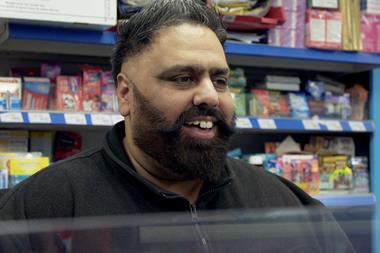
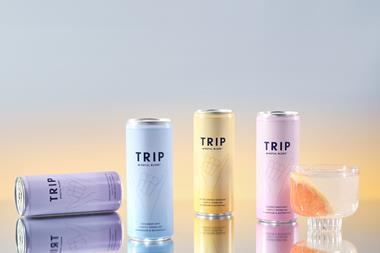

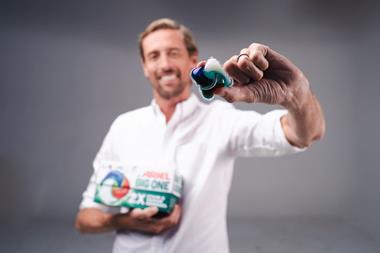


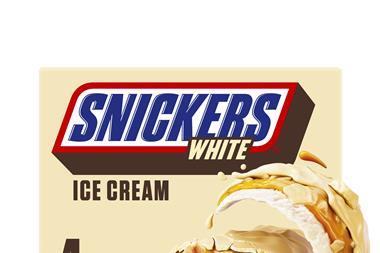

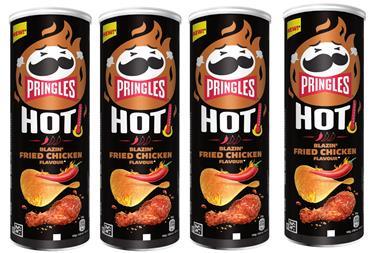
No comments yet